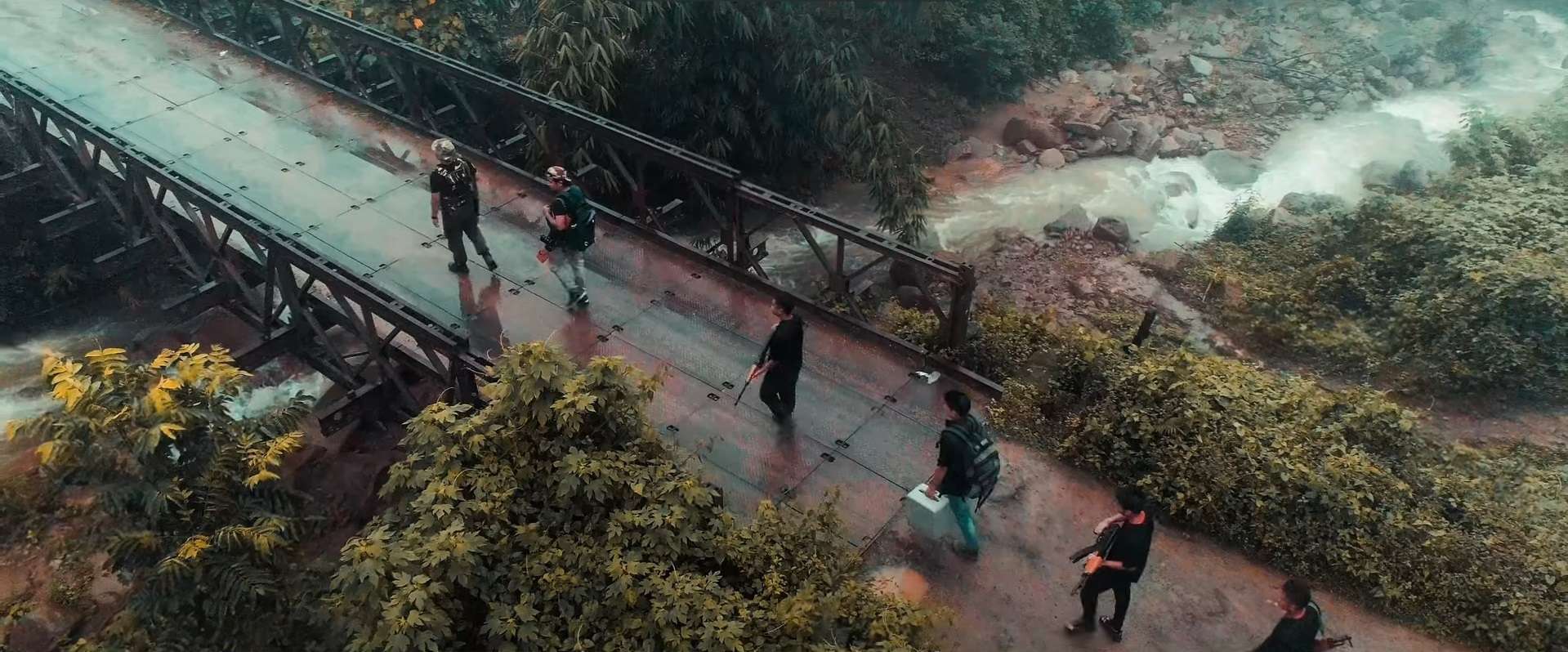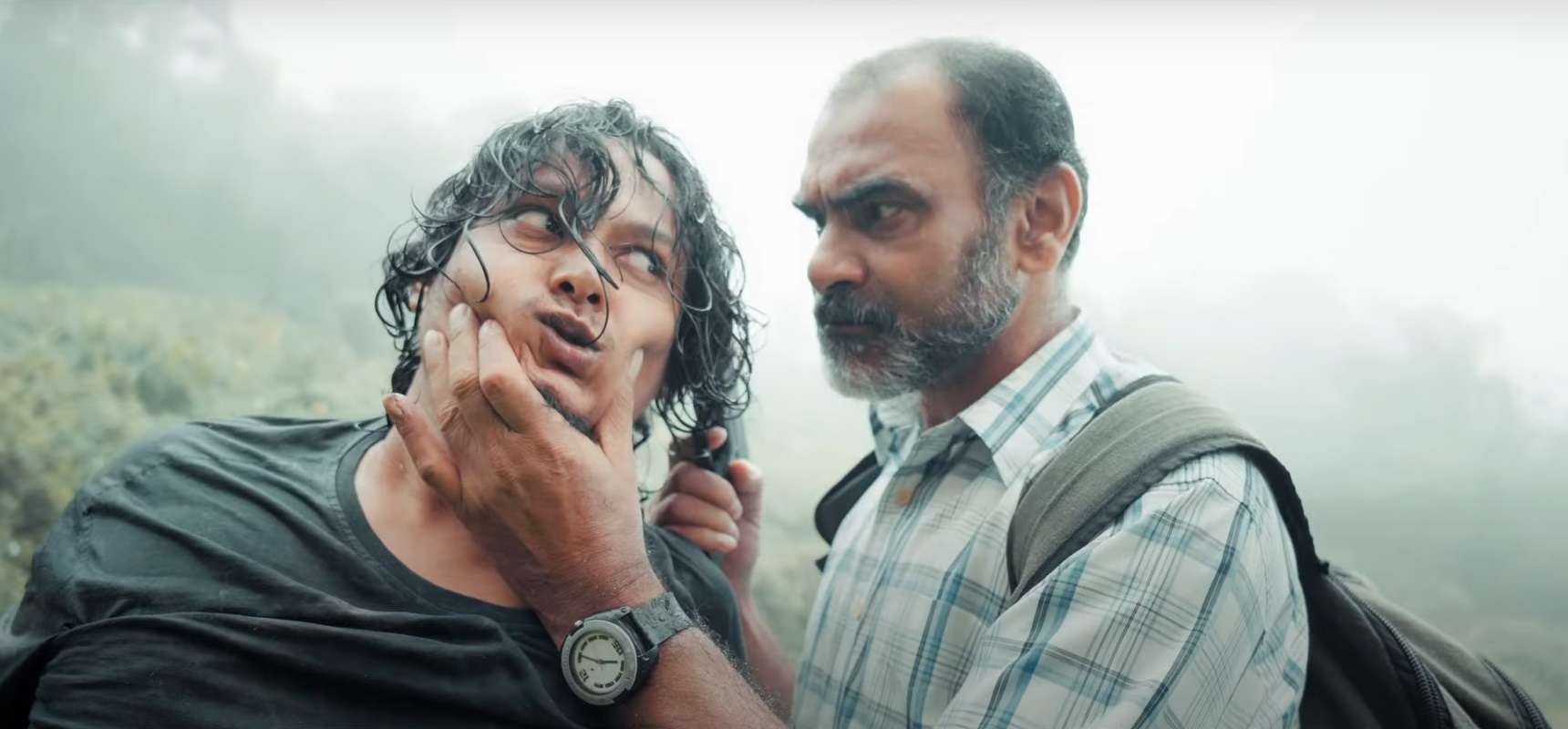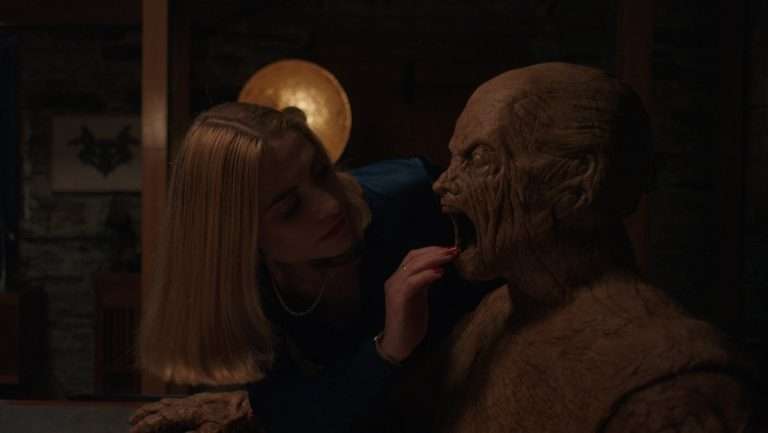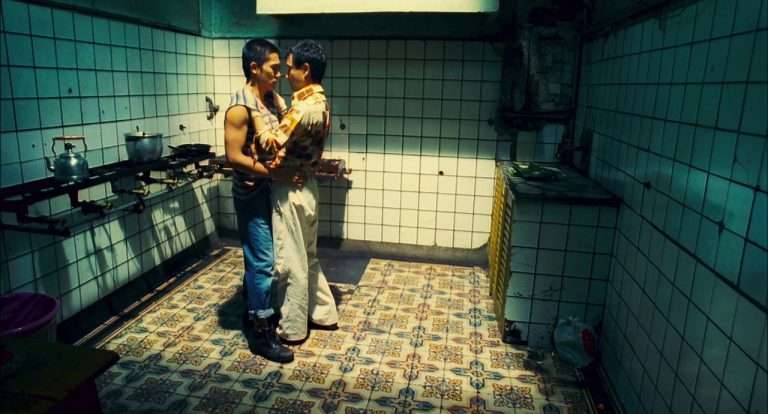“The Mirage” (2024), written and directed by Bikash Mochahary, takes place in the present and is a fictionalized attempt to tell a story of insurgency in Assam. As the story goes, Jagat, a young and unemployed youth, disheartened with the multiple denials and perils of the existing system, joins an underground rebel group called Assam Sangrami Sangathan. But very soon he realizes that, only the revolutionary ideals of a banned outfit that preys on innocent lives are not sufficient to claim a new dawn.
The film, told in chapters, opens with the final part of a mission called Himalayan Blossom. A few unnamed characters stealthily operate in the dark to successfully abandon a two-wheeler under the Ganeshguri flyover of Guwahati. The sequence by design is tense and immediately brings interest to the setup of the plot. In the subsequent morning, a thunder crackles as black smoke rises in the air and many innocent people lose their lives. The ones responsible for the act observe the chaos from afar and hurry themselves out of the city. As they now cross borders and secretly manoeuvre their position from one place to the other, the film cuts back and forth in time to give us a perspective of the choices that have shaped these characters.
A new chapter takes us six years back in time as Jagat (played by Nabajeet Konwar) fails to secure a job even after being well qualified and investing a huge sum of money in it. Thereafter he switches to unfair means of earning, like smuggling timber and wood, but that too doesn’t go very well with his fate. He crosses paths with a notorious student union leader who sells him off to the media after double-crossing him.
And soon Jagat is arrested by the police and forced out of his home. This humiliation affects his image and harms his well-being as well as his family. His bed-ridden father soon passes away, and unable to bear the frustration and pain, he straightens his path towards achieving the goals of the underground group. But we do not get to know how he was able to crack the whereabouts or secure information about the group.
Ignoring that, we move ahead to a new chapter. Now Jagat is part of the rebel group and there he spends time training, building camps, and crossing borders with a few strict men of discipline who show no mercy. In between, he also shares a brief moment with a fellow lady militant who is killed when she tries to escape the camp. The film then jumps a chapter and Jagat lands up in mission Himalayan Blossom (again, we don’t know how, because the film never shows) and now as shown in the present time, he is running for his life along with a few others (after the bomb blast).

Writing a screenplay is all about making a crucial choice between what to show and what not to. “The Mirage” has enough time to drop the audience amid a random conversation between Jagat and a random person (which inspires him to get into the illegal trade of timber and wood), but offered no time to show the other critical decision-making aspects of the characters, such as, how Jagat arrived at that decision or took the call to join the banned outfit.
Assuming that the majority of the story is told through a third-person perspective that explores the situations of Jagat and Ajit, some crucial points of the story lie in the perspectives not shared or the parts of the story left out of convenience. Ajit, a leading member of the militant group, is played by actor Gunakar Dev Goswami who is good, given his role, but his performance in Nabajyoti Bora’s “Mojoli” (2024) was more deserving of appreciation than in “The Mirage.” In “The Mirage,” some of his lines were also dubbed and added in post-production.
“The Mirage” successfully adds itself to the existing canon of movies about insurgency in Assam (and more particularly the ULFA movement in Assam) like “Surya Tejor Anya Naam” (1991), “Sesh Upahar” (2001), and “Haanduk- The Hidden Corner” (2016), to name a few. But it isn’t as elaborate as the stories of “Surya Tejor Anya Naam” or “Sesh Upahar” and is very far away from the poignancy and slowness of “Haanduk-The Hidden Corner.” It is rather more forcefully emotional than thoughtfully engaging in its attempt to tell a story of concern.
Sometimes the film is also very vocally adept in its commentary, as a character literally had to take out an empty pack of biscuits and scream at the other character’s face to convey that they have run out of food and are hungry (because they are trapped in a tricky situation for some time). There are other instances as well where they quickly get around to explaining too much about their conditions (a better word is, they ‘spoon-feed’ the audiences).
But on the other hand, there are also quiet moments in the film that speak loudly, such as, when a rebel leader internally questions his choices and places his gun on the ground near a text of Che Guevara – the contradictions of violence and ideology – or the physical act of placing the gun down. This film demanded more such scenes. While the visual effects are poor in “The Mirage,” its effort to make Assam – a stand-in for Bangladesh – is even more hilarious. When that particular scene comes, they had to blur half of the screen because of a car, bearing a registration plate of Assam, which came into the frame.

“The Mirage” is made entirely from the perspectives of those who join the armed struggles for liberation. It also goes on to humanise them, their situations and their choices in the most direct of ways. Hence, there is no scope for the role of the government or the perspectives of the civilians to be shown in the film, which could have added a layer in the characterisation of the militants and established them as grey figures. Now we just have to take it on their own conscience as one of them claims “Killing innocent people is not revolution”. Thank you for telling us, we aren’t able to figure it out.
Actually, it deserves a mild appreciation that the film entirely sticks to the perspectives and ordeal of Jagat and his group of rebels because filmmakers in Assam often tend to mess it up when they try to bring in a lot of perspectives. That balanced game of storytelling is yet to be achieved successfully by filmmakers from Assam. It’s also worth noting that the film doesn’t take any sides. If we subscribe to the self-reflection and understanding of Jagat, then we know that the perspectives of the militants are wrong or disillusioned. Again, if we step ourselves into the shoes of Ajit, then we must believe that revolution has a greater meaning beyond simple lives.
Now, to write about another aspect of the film, there is the wise use of mist and an ever-drenched-in-rain landscape for the camps, hideouts and the treks of the rebels. It conveys a sense of distance along with the harsh environmental factors and the coldness of their journey. Moreover, with a strong identity-changing game of posing as a Muslim, to benefit his undercover stay in Bangladesh, actor Siddhartha Mukherjee deserves a little mention for his one-scene role in the film. He plays a higher-ranking official of the militant group who masterminds the mission – Himalayan Blossom. And after “Ghost of Maaikhuli” (2022), “Sundarpur Chaos” (2024), and “Abhimannyu” (2024), actor Jolly Laskar, yet again, plays the role of a troubled mother of an unruly kid. Seriously, when will her suffering end?
Produced by Anamika Baruah, “The Mirage” was released in limited cinema halls across Assam on February 21, 2025. The film is said to be inspired by true stories.



![Raw [2016] – The Horrors of Growing Up and Conforming to the Cliques](https://79468c92.delivery.rocketcdn.me/wp-content/uploads/2017/05/cover-1-768x322.jpg)

![Goddess of the Fireflies [2020] Review – A story of freedom](https://79468c92.delivery.rocketcdn.me/wp-content/uploads/2020/04/Goddess-of-the-Fireflies-highonfilms-768x398.jpg)
![High Life [2018] Review: A Baffling Acid Trip into Darkest Recesses of Space](https://79468c92.delivery.rocketcdn.me/wp-content/uploads/2019/04/High_Life_HOF1-768x463.jpg)
